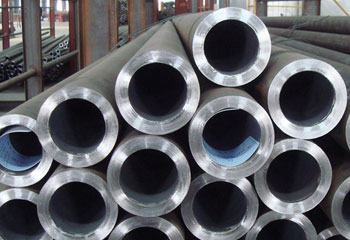What distinguishes AISI 304 steel from AISI 316?
The fundamental difference between these two types of steel is that AISI 316 contains molybdenum, while AISI 304 does not. There are reagents on the market that can identify the presence or absence of molybdenum. In most cases, AISI 316 is more resistant to corrosion, but for some substances, such as nitric acid, 304 offers greater resistance.
However, there is no doubt that AISI 316 certified stainless steel is ideal for applications with a risk of corrosion, such as swimming pools, spas, coastal areas but also urban areas, and other particularly polluted spaces.
SS Seamless Pipe manufacturers in India identifies an iron alloy containing carbon in a percentage that does not exceed 2.06%. If this percentage is exceeded, they will speak of cast iron. Stainless steel contains chromium, generally in quantities between 11 and 30%.
Chromium gives the steel a thin transparent layer of a few atoms. In case it is damaged, it can regenerate itself immediately in the presence of the oxygen contained in the water or the air, continuing to protect them from corrosion. This explains why stainless steel can resist corrosion and remain bright for years without any coating or protective treatment.
Stainless Steel 304L Seamless Pipe suppliers produced Welded pipes by forming an aluminium strip, then joining the joints through a high-frequency welding process. When choosing the type of stainless steel pipes, what could define the choice surely knows how and where to use these pipes based on the reference design.
Types
The main difference between welded and non-welded pipes is the possibility of a multilayer material consisting of different aluminum alloys. The cladding layer is widely used in pipes to produce heat exchangers, to allow baking or flame firing, and achieve corrosion resistance. For industrial applications that require maximum strength and formability, it is possible to opt for 5xxx series alloys, which have high dimensional stability.
Seamless pipes are mainly used when the standard specifies “seamless standards,” but current standards are continually revised to meet modern welding manufacturing technologies. By using seamless pipes, it is possible to avoid defects and differences in malleability associated with the welded area in this type of pipe.
Using a seamless or welded stainless steel tube depends mainly on the tolerances of the specified tubes. Stainless steel welded pipe manufacturers in India have two types of stainless steel hoses in the dedicated section on the company catalogue of their products. Both are corrugated stainless steel and can be extended up to double their original length. For the construction of these flexible stainless steel pipes, stainless steel of the AISI 316 L families with low carbon content is used, which makes it more easily weldable during the construction phases of the product.
The ends of the flexible stainless steel pipes are welded to the pipe with a TIG process in a controlled atmosphere.
As Stainless Steel 316L Seamless Pipe suppliers said, offers this type of hose, one suitable for gas with an external plastic coating. This particular version complies with the EN 14800 standard, and the protection limits the effect of abrasions on the metal material.
